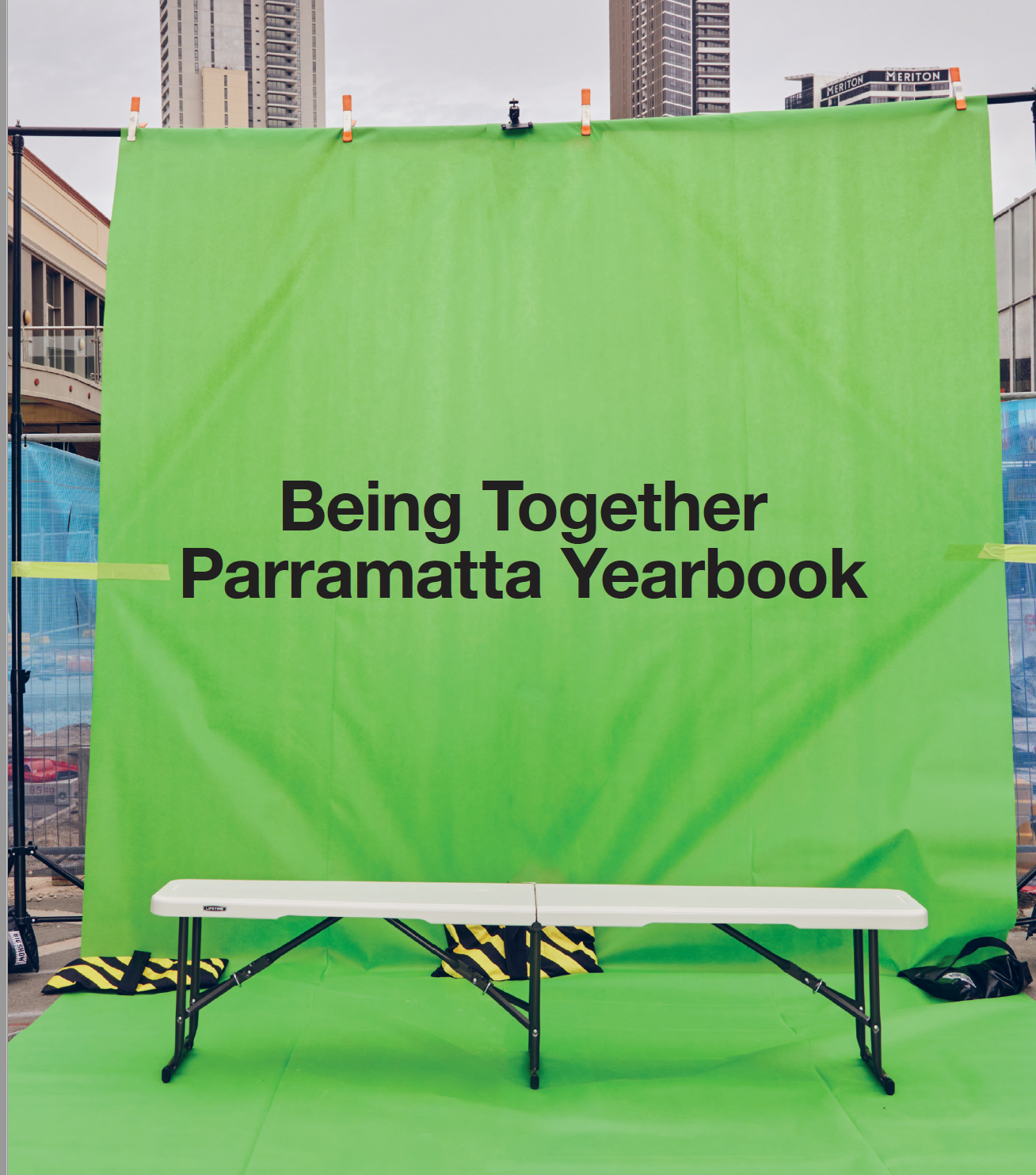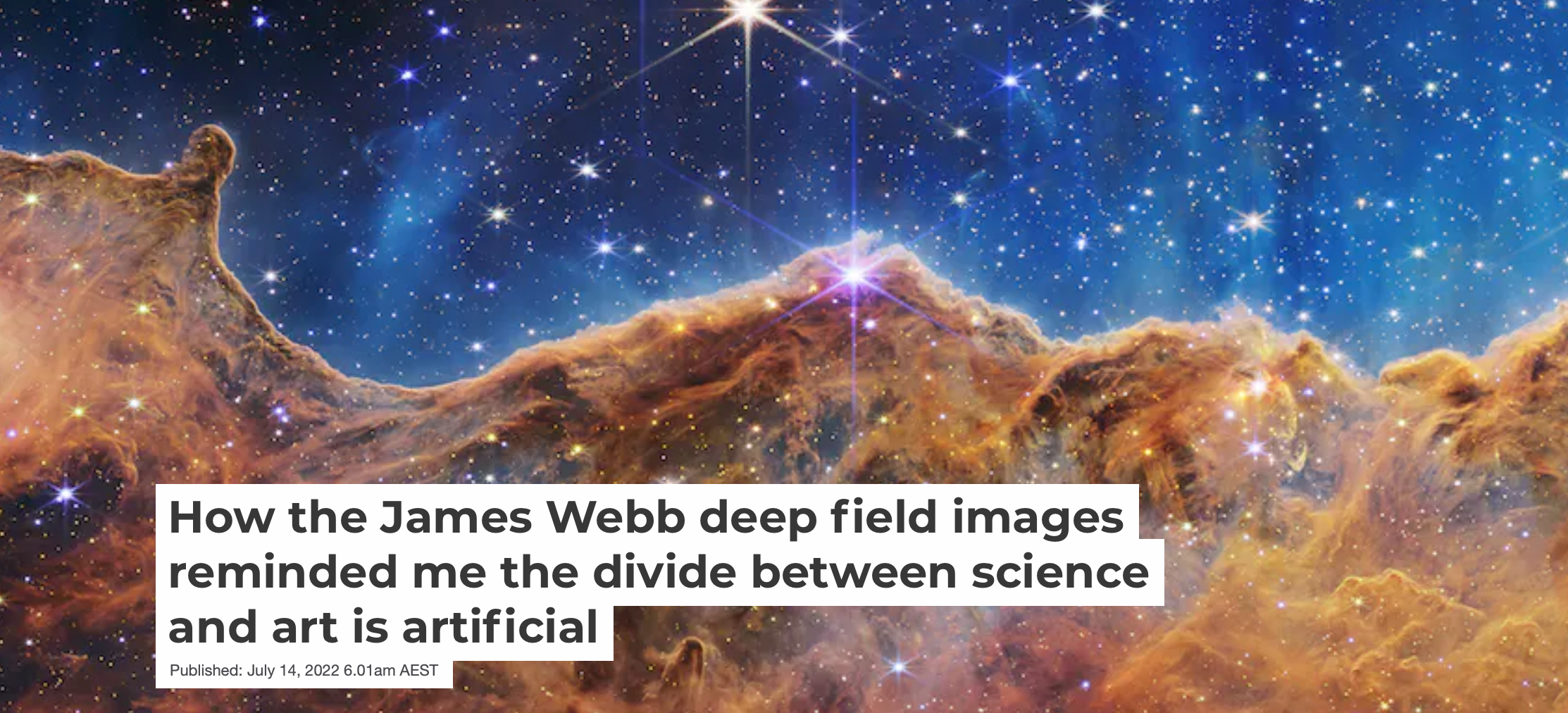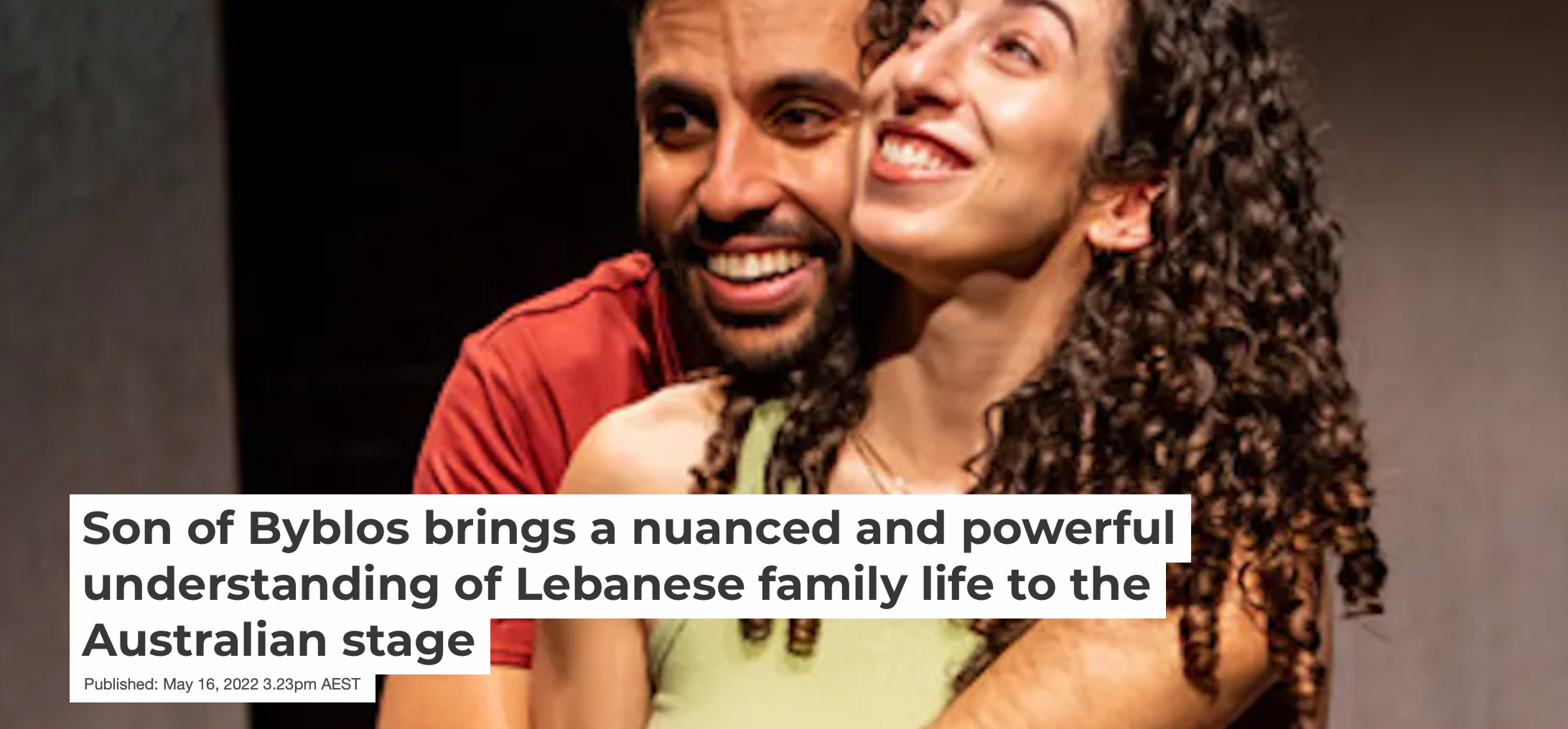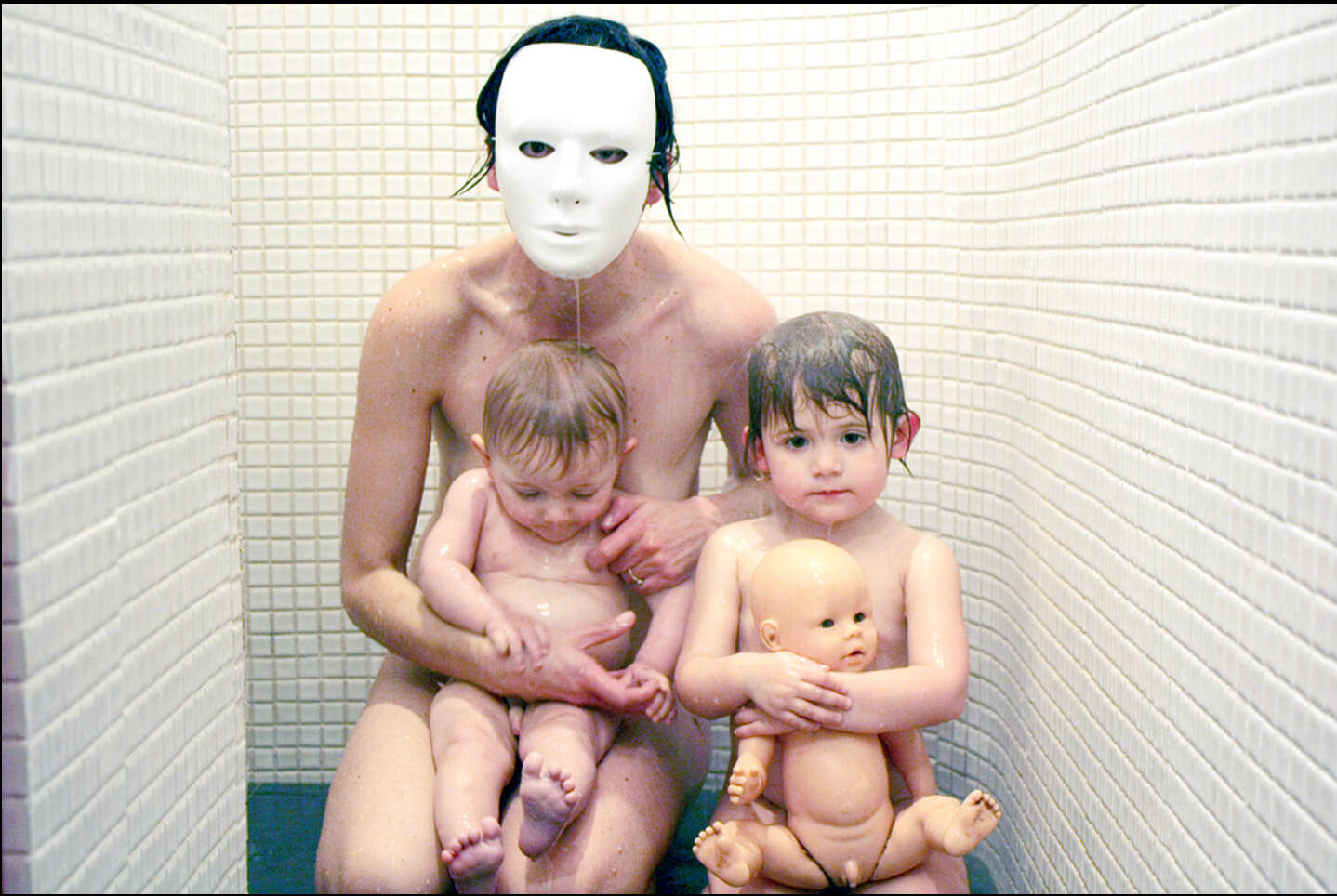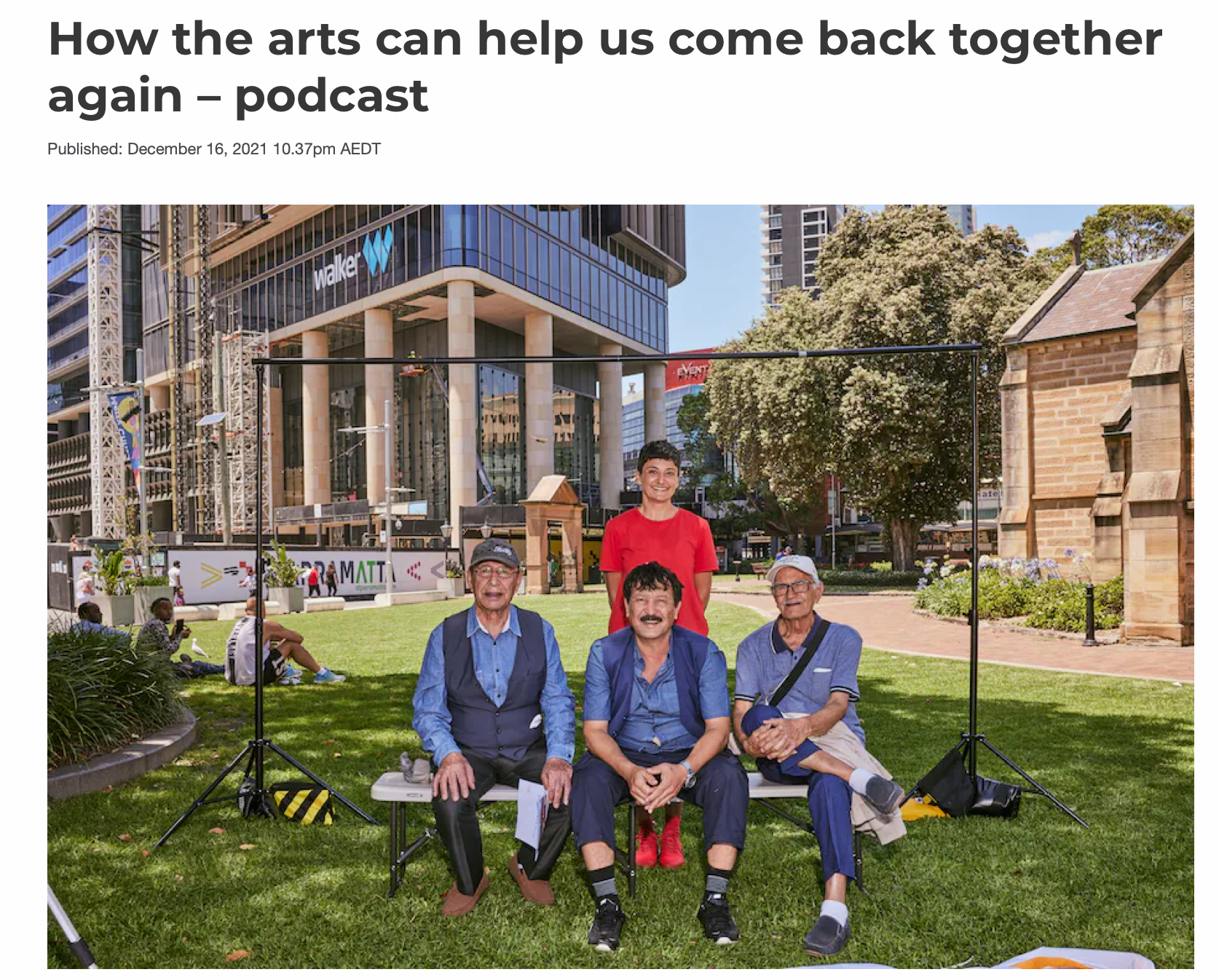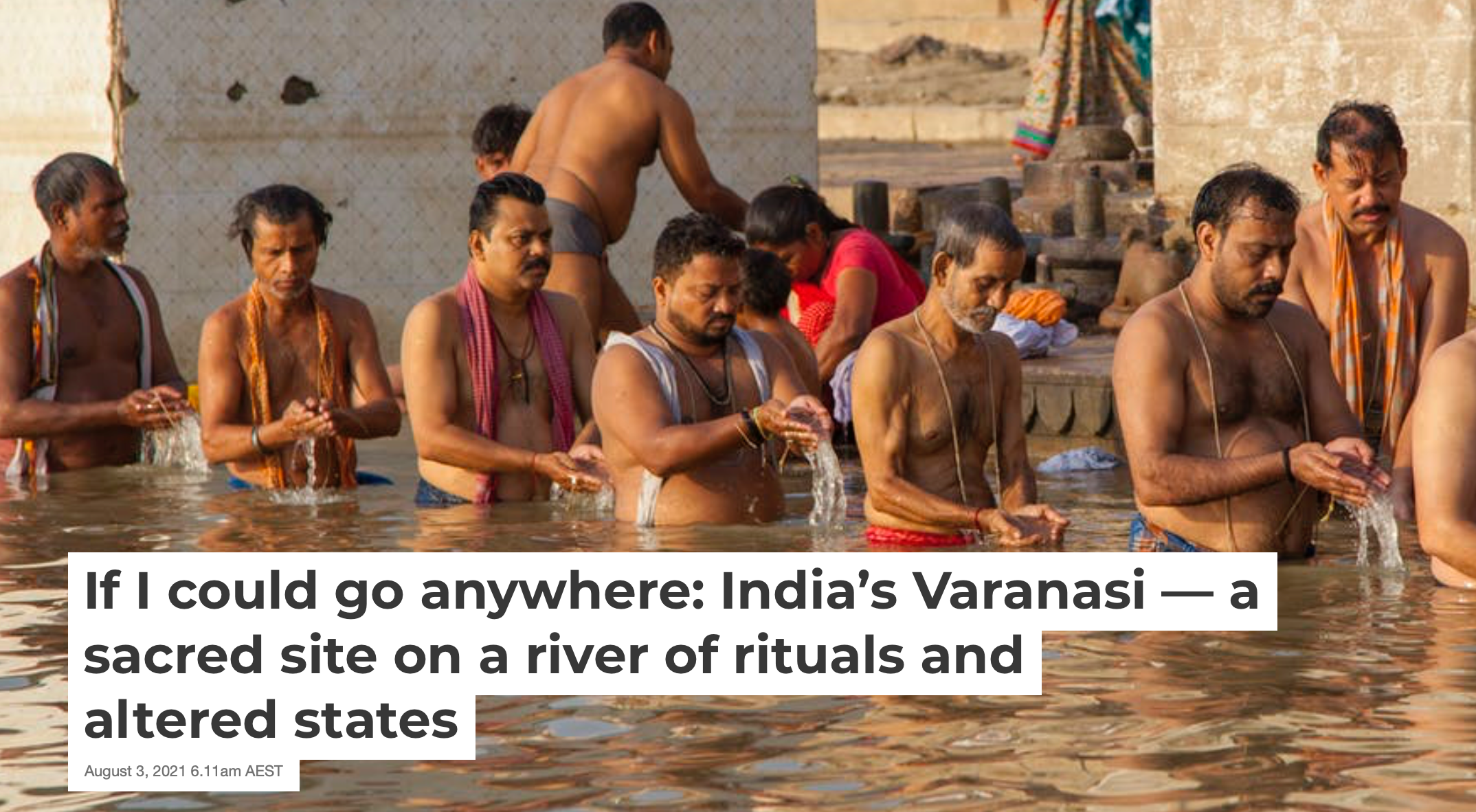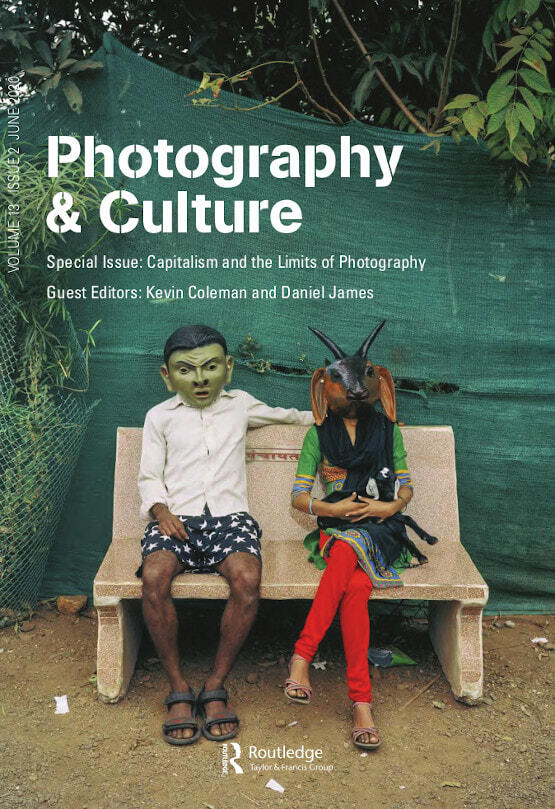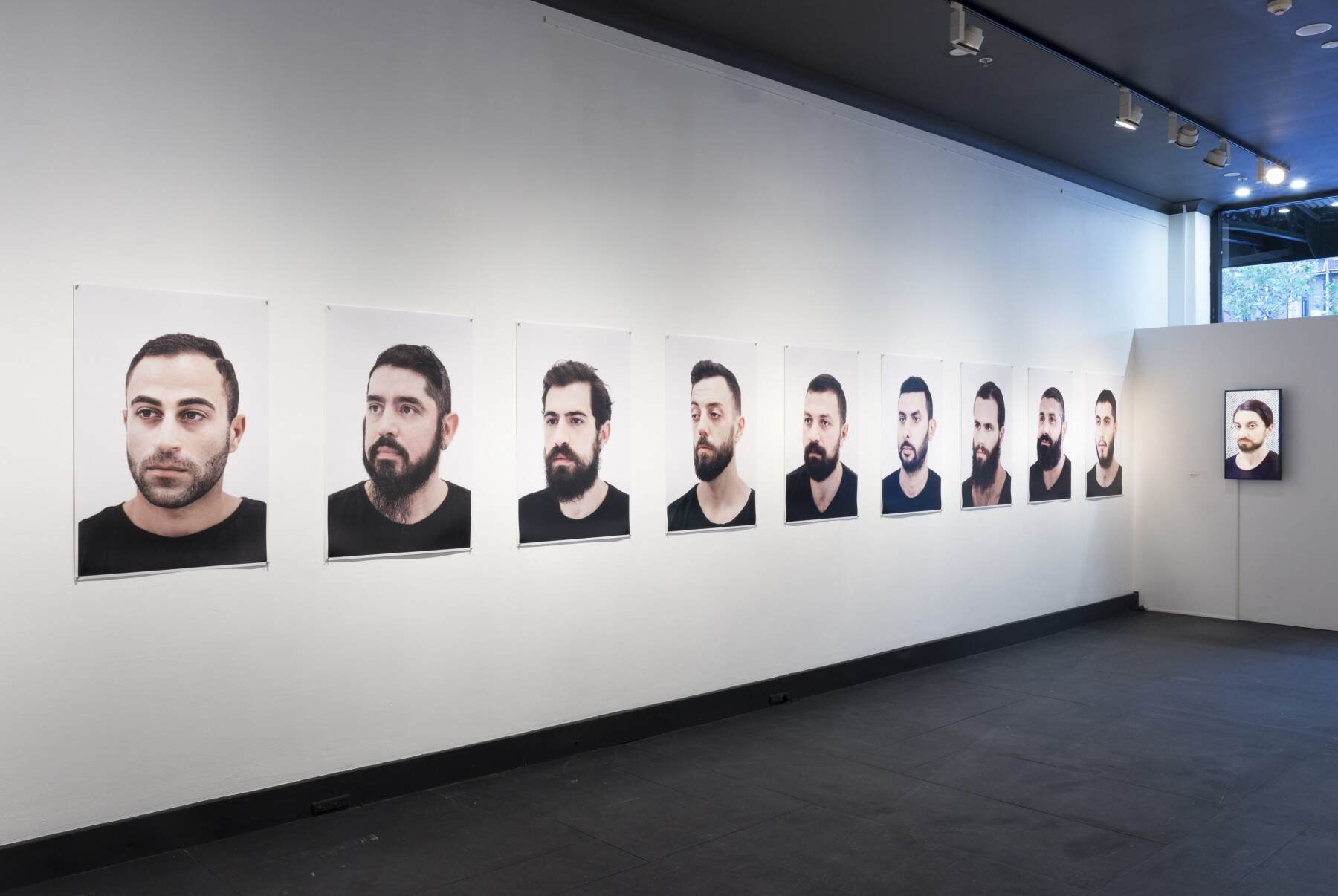
Blair French. "We Think You Look Like",
We think you look like…
As has been the case with a number of her projects over the past two decades, Cherine Fahd’s photographic series You look like a … takes its cue from personal experience and family circumstance. In this instance, the work has developed from her parents’ concern with the look of her two Lebanese-Australian brothers with their ‘big dark eyes, prominent noses, tattooed muscles and distinctive beards’, as Fahd herself wrote in an article for the online publication The Conversation (6 April 2017), and its alignment with a wider societal stereotype of terrorist.
Having long been fascinated by the manners in which personal appearance is so easily assumed to denote cultural – and therefore also gendered, socio-economic and political – identity or belonging, Fahd has produced a number of bodies of work that set preconceptions into play. In some instances her bodies of work highlight certain loaded signifiers of identity, from facial features to clothing. In others, they enact a form of photographic hide and seek that emphasises the degree to which the perceiving subject pieces together partial, incomplete visual hints in order to arrive at ascriptions of identity which often simply serve to confirm existing prejudices. Much of her work pursues these two actions simultaneously, in parallel.
Fahd’s work shifts back and forth between the personal and the collective, whilst often oscillating between acts of revelation and concealment. It traces a tension within portrait photography between its potency as a vehicle for granting representational presence to individual subjects, and its utilisation as a tool of institutional classification and power, reinforcing stereotypes through subsuming the individual within the collective type. (This latter holds however unstable or contingent this type itself may be, as Fahd notes writing on the crossover between ‘terrorist’ and ‘urban hipster’ typologies that these photographs highlight. Here deciding the stereotype of choice, staking meaning to an interpretation of either ‘terrorist’ or ‘hipster’, is largely a matter of context – where the image is published or encountered, geography, time, culture, the preconceptions of the viewer and so on.)
In You look like a … Fahd presents portraits of twelve bearded young men in a consistent format. Some seem clearly Arabic in appearance, others not so much, however the inference remains due to their incorporation within this photographic group. She has photographed each neck and head against an off-white backdrop. They all wear a black tee-shirt and adopt the same pose, set maybe 30-45 degrees to the camera, looking out to the left of the photograph, looking beyond the space contained within the photograph. In this way each has a very slight twist of the neck or turn of the shoulders, but to literally different degrees. Some turn away from the camera. Others almost remain faced to it, but look away. Some appear to advance – the head nudging forward of the shoulders as one perhaps does when looking intently, leaning towards the object of the look. In other photographs the head tips to the side ever so faintly, or is held back as if uncertain of commitment to the act of looking.
These marginal differences across the typology of the photographs are crucial. They ever so slightly disrupt the classificatory action of the series, suggesting that whilst it draws upon the history of photography’s deployment within the realms of ethnography and institutional bureaucracy, it does so with a distancing, questioning attitude towards that very deployment. There is a representational system at play within these photographs, but it allows room for individual inflection on the part of its subjects, for degrees of self- consciousness or even discomfort at the photographic act on their behalf to become apparent, or for glimpses of a relationship between photographer and subject underpinning the image. Scanning the series we can discern expressions of fierce resistance through to bemusement or detachment.
Differing attitudes on the part of the subjects to their own appearance are also discernible. As portraits the face might be the obvious point of viewer focus, but the full heads and necks of these subjects are critical to any character that we read through the photographs. Haircuts are generally accepted as means of projecting personality, or an image. But beards here are also important – not just in their linking these men and identifying them as a group, set or collection, but in individual touches also. Some beards are silhouetted against the skin behind. Others appear more clearly of rather than covering the face. Some are razor sharp. Others are less kempt. With some of the subjects we can see how carefully the upper neck is shaved – the degree of precise care attached to the beard and appearance generally. Others appear less so.
All the subjects have been asked to sit for these portraits because of their beards, not just its look but the personal choice to wear it for reasons other than religious or cultural requirement. So we know they have not been grown for the photograph. Nevertheless, we might ask, is this degree of grooming/anti-grooming an attitude brought to the occasion of the photograph – an image self crafted for the performance of the studio sitting – or are we simply seeing these men as they are at home, at work, on the street, in the café, on the sporting field any day of any week? That is also to more broadly ask, how do we balance the formal and highly self-conscious or directed representational structure of this series with its basis in a form of societal document? It is a question that has been directed at photography projects for well over a century, and one that Fahd’s work has consistently continued to evoke in its focus upon the performance of identity through photography, or indeed, the representation of identity through photography as a form of performance.
We could say that this series mimics photography’s classificatory agenda, but in a deliberately inexact manner. These are not images of subjection to quasi-scientific theories of racial or social type, or apparent tools of institutional record and control (although it is clear that they are designed to raise these spectres). For example, they avoid both the full-frontal, direct stare into the camera and the 90-degree silhouette associated with those conventions. They also lack the visible measurement indexes that occasionally appear in 19th and early 20th century ethnographic photography (and some more recent law enforcement modes of photographic record). Whilst like much portrait photography, they could be used to identify their subject out in the world, they do not conform to the camera-facing convention of the ID photograph.
That said, the head at roughly 30-45 degrees is itself one portrait convention, reaching right back into aspects of 19th-century photography (both within an anthropological framework as well as a formal studio portrait economy associated with middle and upper class status) and in turn to earlier forms of painted portraiture. Within such a convention the substance of the figure – whether head and shoulders or fuller torso – tends to grant a certain heft to the subject. Any turn of the head also provides a figurative density or volume that assists in imaging of light and shadow (although somewhat akin to the digital two-dimensionality of contemporary passport photo conventions, Fahd has minimised the play of shadows in these works). Most critically, subjects can appear ‘lost’ in contemplation, and therefore convey a dignity independent of any specific relationship to the photographer or viewer – what that most poetically oblique writer on photography Roland Barthes referred to as the ‘ascensional’ quality of the ¾ portrait. (Although Barthes in his mid-1950s essay ‘Photography and electoral appeal’ was writing in reference to the look of the subject lifted upwards, out of the photograph, with associated connotations of elevation and heroism, whereas a number of Fahd’s subjects look directly out on the horizontal plane, or even slightly downwards.)
The scale of the photographs emphasise this gravitas. Encountered in this publication they have presence enough. But in their exhibition form the portraits are significantly larger than life size. This enables us as viewers to scrutinise every detail of the figures. More critically, it draws us into a particular form of physical experience of the work, where the prints and their positioning on the wall accord roughly to the scale of our whole body in space. Although not fully monumental to the degree of some portrait photography that has appeared within the arena of contemporary art from the 1980s onwards, these works nevertheless present a large pictorial surface for the eye to journey back and forth across as well as imparting a sense of physical heft, perhaps even suggesting an association with the classical or neo-classical bust, with its inferences of historical power and importance.
The portraits confer or acknowledge the individual substance of each subject. Yet the camera – its look, the look of the viewer –almost appears to glance, to slide across their faces. The turned head is a form of deflection. Whilst offering themselves up to photographic rendering and scrutiny, the subjects of Fahd’s portraits are also agents in a play of avoidance and deception. This interest in a play of concealment within the act of portraiture – almost a game of hide and seek between camera (or photographer) and subject – also runs through Fahd’s practice more generally. But where it often constitutes an overt action before the camera and within the photograph, such as in Fahd’s Shadowing Portraits where the artist photographs herself in a form of hiding behind other figures associated with the medium, here this play is subtle and covert for the seemingly paradoxical reason that it resides solely in the form of a visible subject, exposed before the camera. These men are hiding in full view, seemingly aware of yet eliding their subjection to photographic typecasting. They are passing before us. And it’s just this action of passing, of projecting an identity through accrual of visual signifiers – or one simple visual signifier (the beard) – that Fahd is in part examining in this series. (A concern highlighted by Fahd’s own mimicry of her own work in her adoption of each of the twelve beards to her own physiognomy in a partner work to this series.)
To put it another way, Fahd is questioning an assumption that to choose to adopt particular modes of appearance – in this case the beard – is to willingly choose to associate with an assumed identity, to be conscious of that association or to accept it within its broader cultural, societal and political resonances. Is the subject to be recognised and appraised through the frame of this association? In the moment of this apprehension and naming – ‘you look like a…’ – is the absorption of the individual within a group recognised as an act on the part of subject? (‘You look like a…’ meaning ‘you’ve chosen to look like’.) Or is it an act of visual association that primarily identifies the viewer rather than the subject? Whose experience, attitudes and identities are the photographs really portraits of?
As much as these are formal portrait photographs of individual young men, each created in an apparent attitude of mutual trust and respect that allows something of the individual personality of the sitter to emerge even whilst presented within a typology, collectively these photographs are also a form of societal mirror – they externalise and perform a collective prejudice. These are photographs of twelve young men that collectively tend towards a very different social portrait of contemporary Australia – or at least one component element. They point to just how contingent and volatile our perceptions of others are. How they can shift from moment to moment. And how our plays with appearance – our own and our assumptions of those adopted by others – can shift in the blink of an eye from matters of fashion and social tribalism to something altogether more disturbing. Blair French
This essay was written for Cherine Fahd’s paired volume, A Portrait is a Puzzle, published by
M.33, Melbourne, 2017.
Blair French is Director Curatorial & Digital, Museum of Contemporary Art Australia. His books include Photofiles: An Australian Photography Reader (1999), Out of Time: Essays Between Photography and Art (2006), Twelve Australian Photo Artists (with Daniel Palmer, 2009) and Civic Actions: Artists’ Practices Beyond the Museum (with Anne Loxley, 2017).
